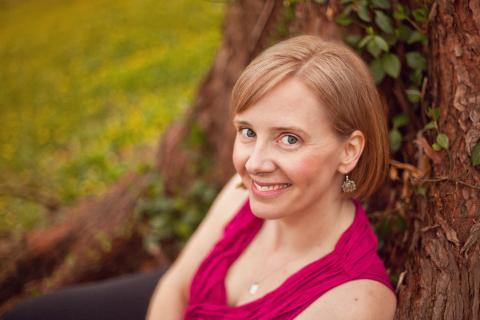Beyond Pedagogy: When vocal technique is no longer enough

We asked longtime BSR collaborator Sarah Whitten to share some insight on the physicality of singing. Sarah is a specialist in how our bodies affect our singing, and we are so grateful she shared this guest post!
Every singer has sticky spots - those places where things aren’t working as they should and there’s a negative impact on the voice. Maybe it’s tension held somewhere in the body. Perhaps it’s difficulty singing in a particular range. Maybe it’s an observation that your breath simply isn’t as free as it could be. These sticky spots are the issues you get the same feedback on from voice teachers, coaches and directors, yet no matter what you do with vocal technique, they don’t resolve.
The way we typically learn to sing is by focusing on the systems involved in producing sound: respiration, registration and phonation. We focus on one system at a time, with occasional moments of overlap, building the abilities of our instrument to function well. That process isn’t a bad one at all it is simply incomplete.
When we learn in this part-specific way we miss out on the amazing interconnections in the body and how the whole body impacts the voice. For example, it might seem obvious that tension in your neck will make it harder to produce a high note, but can you wrap your mind around the idea that the tension in your calves and/or psoai, or even the mobility of the soles of your feet are also contributing? What if your the way you are taking breath in creates additional tension in neck muscles? All of those places are impacting what is happening in your neck!
When vocal technique isn’t resolving your issue, what do you do? To find answers you need to move outside of the (voice) box and into the rest of the body. Getting to the root means going beyond the learning offered on the pages of pedagogy books where skeletons are shown with proper posture and only the ideals of function are explained. You need ways to better understand your body and breath, and have opportunities to learn through movement to bridge the gap between what you learn is correct, and the reality of your physical being.
This process of getting intimately acquainted with your body, learning to feel and understand how it moves and doesn’t move, is a critical one for singers. The first step is becoming aware of patterns of tension and weakness as well as under and overuse in the body and breath. Once you’re aware you can move on to skill building where you move more, move differently and move better, to bring about improved mobility. Mobility is the wonderful combination of flexibility and stability, where movement happens with good range and strength. As you begin to move more and move differently your body shifts and the places that were sticky spots have an opportunity to resolve.
Sarah Whitten is the creator of the Singers’ Online Learning and Movement Library, a place for singers to learn how to live better in their body through movement classes and workshops. She is a voice and body specialist located west of Boston and works 1 on 1 with singers as well as offering weekly movement classes and frequent workshops. To learn more about her, visit www.sarahwhitten.com.
